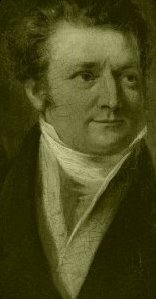Daniell Cell: Difference between revisions
No edit summary |
m (Text replace - "[[Category:Power,_energy_&_industry_applications" to "[[Category:Energy") |
||
| Line 13: | Line 13: | ||
In 1837, Daniell received the Royal Society’s highest award, the Copley Medal, for his battery. His invention would power a host of emerging technologies, including telegraphy. | In 1837, Daniell received the Royal Society’s highest award, the Copley Medal, for his battery. His invention would power a host of emerging technologies, including telegraphy. | ||
[[Category: | [[Category:Energy]] | ||
[[Category:Electrochemical_devices_&_processes]] | [[Category:Electrochemical_devices_&_processes]] | ||
[[Category:Batteries]] | [[Category:Batteries]] | ||
Revision as of 17:09, 22 July 2014
London, England. A great advance in battery technology was the invention of what came to be known as the Daniell cell, which John Frederic Daniell made public in 1836. It was the first reliable source of electric current.
John Frederic Daniell was a British chemist and meteorologist. Appointed the first professor of chemistry at King’s College in London in 1831, he invented a number of important measuring devices, including the pyrometer, which won him the Rumford Medal of the Royal Society. But his most important scientific contribution was his invention of the “Daniell Cell” in 1836.
Before Daniell, electrical experiments depended on voltage generated by voltaic cells. Voltaic piles provided a continuous source of electricity, but they lost power rapidly. Daniell’s improved cell drew power more evenly during its continuous operation, expanding the range of possibilities for the application of electricity.
Daniell solved the problem of energy loss by taming the buildup of hydrogen in voltaic piles. In other words, he eliminated polarization in the battery. The Daniell Cell used an alloy of amalgamated zinc and mercury, creating a two-fluid class battery consisting of two electrolytes: copper sulfate and zinc sulfate. Putting a barrier between the copper and zinc plates prevented hydrogen from forming, and thus stopped the battery’s polarization.
Daniell set up the battery by placing a copper plate at the bottom of a glass jar. He then poured a copper sulfate solution over the plate to fill the jar halfway. Daniell suspended a zinc plate within the jar and carefully poured a zinc sulfate solution into it. Zinc sulfate is less dense than copper sulfate, and so it floats over the copper sulfate.
In 1837, Daniell received the Royal Society’s highest award, the Copley Medal, for his battery. His invention would power a host of emerging technologies, including telegraphy.
